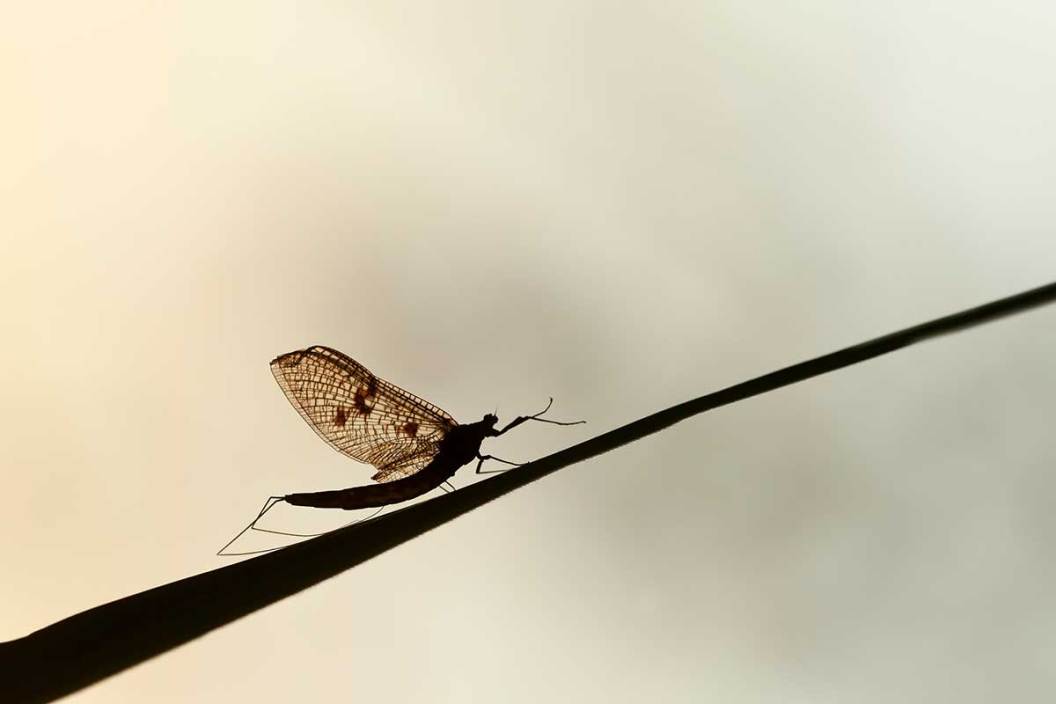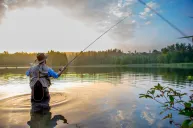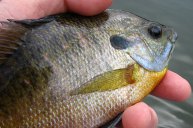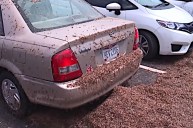Knowing these three common hatches for stream fishing is the difference between success and failure.
Depending on the time of year, trout (and other game fish) are eager to capitalize on major insect hatches, and it's turned into a fisherman's benefit. Once humans caught on, particularly fly fishermen, we started to see how we could take advantage, too.
Even the pickiest of fish will make a move when some bigger, meatier offerings present themselves, and fishing with flies that mimic those insects in their various life stages is almost certainly going to improve your odds.
But the bottom line is that trout are still a finicky fish, especially when it comes to stream fishing. Sometimes the most subtle differences can turn things in your favor, but they can just as easily make difficult fishing even tougher.
For anglers in the know, finding and identifying the species of insects that are hatching and emerging, and then matching them as an offering, can be both fruitful in the moment and add a feather in the cap of your fishing knowhow.
Most of what we'll bring up involves fly fishing for trout, but that's not to say some of these same facts and principles can be used when targeting other species. As long as they're known to eat bugs, fish will get active and be easier to catch when you pay attention to these three hatches.
One thing of note: This isn't meant to tell you what time of year these hatches are going to occur, because that's different depending on the region, weather, water temperature, and more. We'll give you the big hatches to look out for, but it's up to you to learn when they happen where you intend to fish.
Caddisflies
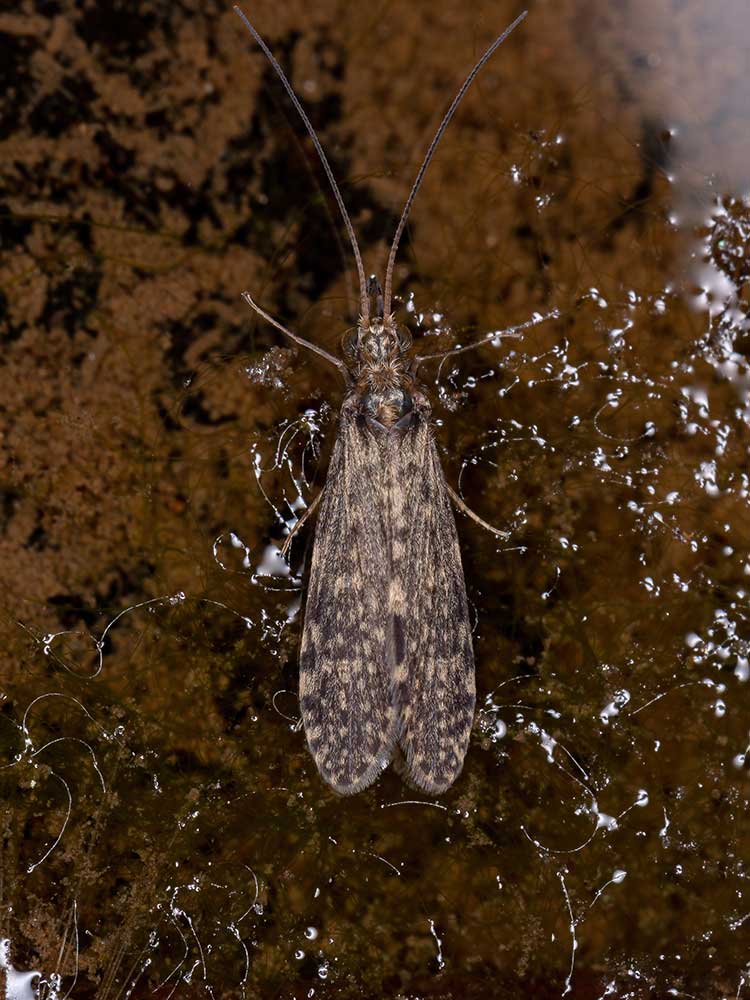
ViniSouza128/Getty
Considering that the caddisfly is such an important target species for fish, not to mention its importance as a harbinger of a clean water system, it sometimes seems to be underrated in its importance as a trout-catching bait. Caddis imitations are now receiving their fair share of time on the end of the tippet, and for good reason.
The adult caddisfly has a moth-like appearance, but unlike moths, caddisflies spend most of their lives living in the water as larvae. Caddisfly larvae generally live in some type of case that they construct from gravel, sand, and plant material, using their own silk to hold it all together.
In the book Caddisflies: A Guide to Eastern Species for Anglers and Other Naturalists by Thomas Ames, Jr., the author clarifies the caddis as divided into three families: primitive, fixed-retreat makers, and tube-case makers. This just means that trout and other fish target them all in these differing ways.
One of the best parts about the caddisfly is that it can be used as an imitation throughout their differing stages, starting with the larvae imitation, then the pupa, and finally the adult stage. They can be fished using nymphs, wet flies, and dry flies depending on the stage of their emergence.
Caddisflies can catch trout all the way through their life stage from the time they hatch out of the egg, rise, become and adult, and even after they die.
Stoneflies
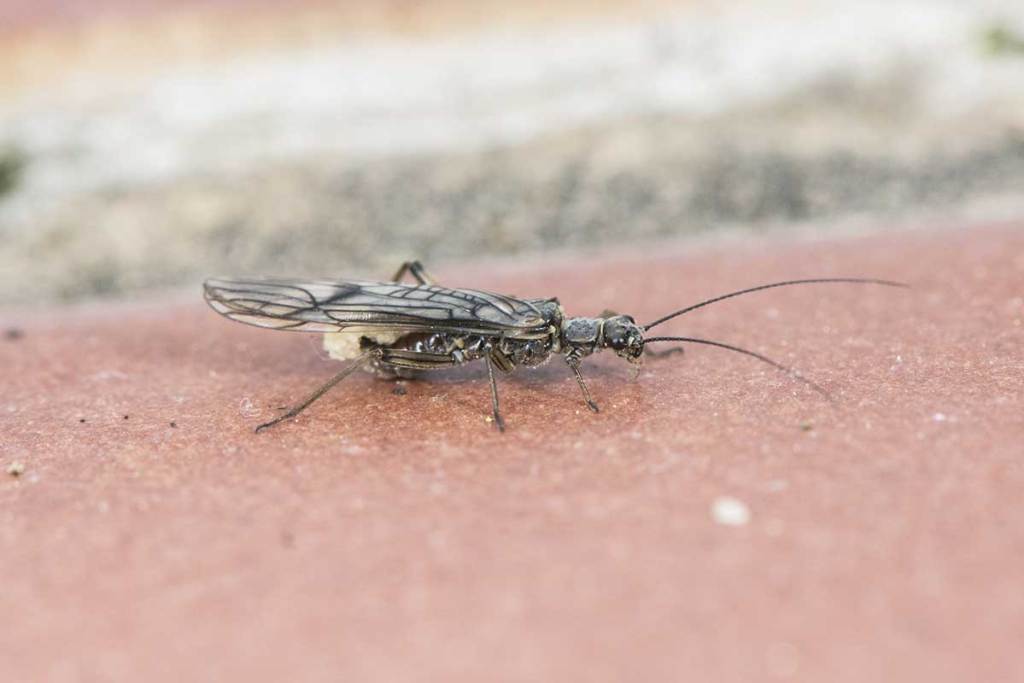
ViniSouza128/Getty
Stoneflies are less prolific than mayflies and caddisflies, but due to their size they are a welcome food throughout the year. Trout, smallmouth bass, and many species of panfish rely on the large-sized nymphs that appear in most streams across the U.S. They're another indicator of clean water, so much so that they can't even survive in polluted ecosystems.
Catching a stonefly hatch and matching your flies perfectly can be one of the best fishing events of the season.
Stoneflies are the largest of the three main trout stream insects, and when used as a nymph imitation at the right time, they can catch fish when nothing else is working. Stonefly nymphs generally live on the stream bottom, crawling on and around the debris to find food and take shelter from their many predators.
Stonefly nymph fishing is regarded as one of the best ways to produce strikes, especially in the early spring, as well as bigger fish thanks to the bait's size. Nymphs migrating towards the shore in the spring to molt into the adult stage are vulnerable to attack from fish, making it an advantageous effort.
Six-weight rods, sinking lines, and light tippets make for some great trout fishing action with stonefly nymphs. The combination will get your offering down to the desired level in the water column faster and keep it there.
Mayflies
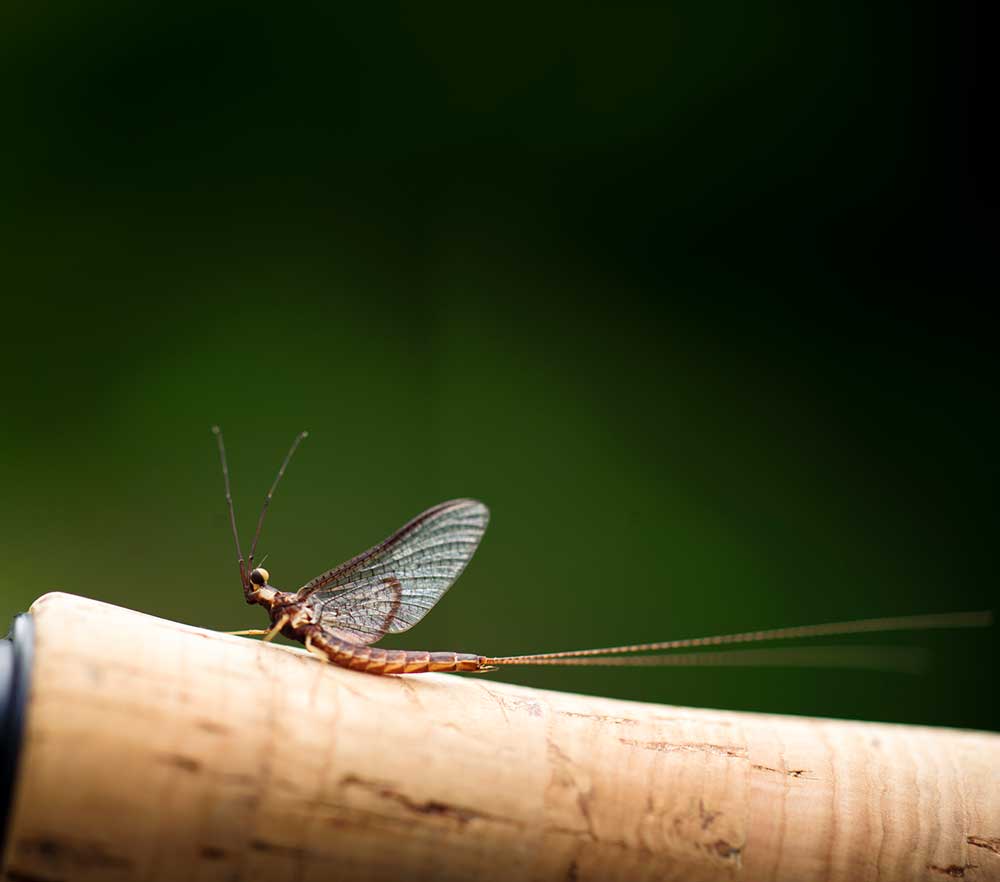
doug4537/Getty
Mayflies so common in streams across the North American continent, and are vital food sources for many trout and other gamefish. Mayflies may seem inconspicuous, but they hatch in droves and can really roll out the trout buffet.
Mayflies can become and adult, mate, and die all in the same day, making them one of the most unique insects on Earth. They live most of their lives as a nymph, emerge as duns, and shortly after transform into the spinners that we all know and love to imitate.
For fly fishermen, we mostly like to offer fish nymphs during that stage, but there are multiple patterns to choose from: the subsurface version that is attempting its rise from the water, on the surface as they molt or as duns about to take flight, during their egg-dropping experience, and when they are spent and dying.
They come in several categories that fly tiers like to call swimmers, clingers, burrowers, crawlers, and emergers. The pheasant tail fly is a tried and true pattern for swimmers, the March brown is known as a clinger pattern, hare's ear is effective for crawlers, and the popular soft-hackle series is great for the emerging hatch.
Match the Hatch...Chart
What is a hatch chart? Simply put, a hatch chart shows the approximate seasonal hatches for a specific group of insects in a general geographic region. These usually include the common name of the fly (and sometimes the latin name), the suggested fly size, the recommended fly (such as nymph or dun), and the month or months that it hatches, or emerges.
Hatch charts can help the prospective angler choose the appropriate flies and tackle that are likely to need for a fly fishing trip to certain locations. The angler can then be sure to have the right flies for a specific hatch, or if they tie flies themselves, they can find the pattern listing for those flies in question and create their own.
Get your hands on a hatch chart for the waters you want to fish, and put the info we've shared to good use.
Aquatic Insects as Bait
The endless supply of fly patterns is extensive and growing, but as fly fishermen well know, there is always room in the fly box for another food-source pattern that will catch a gamefish.
The life cycle of these bugs helps dictate whether we're dry fly fishing, nymphing, or some other approach. Pay close attention to the most common hatches, educate yourself about which flies translate to the life stage of the insects, and you're setting yourself up for a better experience all around.
Looking for a new way to display those antler sheds? Go to Rack Hub and use the coupon code Craiger. Be sure to follow my webpage, or on Facebook and YouTube.
NEXT: THE BEST FISHING STATES WEST OF THE ROCKIES
